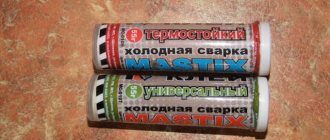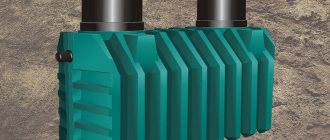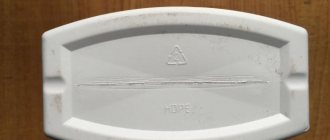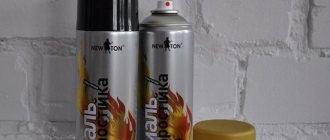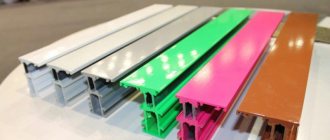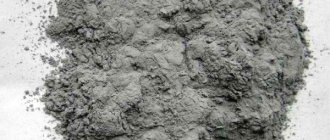Bronze powder, by definition, is a fine powder composition. The material is made from two metal alloys - zinc and copper. Paraffin and stearic acid are added to it to prevent sticking and oxidation of very fine particles. Bronze powder has a scaly structure that resembles the appearance of a petal. It has a color ranging from red to gold. It may have a certain shade - it depends on the percentage of zinc in the composition.
Production
The product is produced exclusively industrially, by repeated crushing of bronze powder. The procedure is carried out in special pneumatic installations or ball mills. Bronze powder is extracted from pure copper and zinc-based alloys by grinding. The end result is a powdery mass containing millions of tiny particles. High-grade bronze powder is obtained by passing through sieve number 0045. The final residue is 1%. Paints and varnishes and coatings based on bronze powder have a high hiding power, which is 4500 grams per square centimeter.
Bronze paint based on bronze powder: preparation and use
Paint made from bronze powder is successfully used to decorate products made from various materials.
Using this paint, you can give a characteristic texture and metallic shine not only to metal, but also to materials such as glass, plaster, cardboard, concrete, plastic, etc.
The reliability of adhesion of such a coating to the surface of the product being painted is determined by the characteristics of the binder material that was used to prepare the paint.
Bronze paint is often used to restore the finishing coatings of antique objects.
Main component of bronze paint
The main component of the paint, which allows you to paint products from various materials in a beautiful metallic color, is bronze powder. This powder, characterized by a very fine fraction, is produced by grinding metal in special mills.
The metal that determines the color of the resulting powder can be pure copper or its zinc alloys. Depending on the metal used, the color of bronze powder varies from light golden to quite rich red.
Bronze paint base is fine-grained copper alloy powder
The quality of painting is influenced not only by the composition of the material, but also by the size of the bronze powder fraction. Thus, paint powder is considered one of the best in quality, which, when sifted through a sieve numbered 0.045, gives a residue of no more than 1%.
In order to obtain bronze powder, the particles of which have a scaly shape, when grinding metal, this process is carried out with the addition of special lubricants to the mills.
The highest quality powder, providing coverage up to 4500 cm2/g, is obtained by grinding not pure copper, but bronze alloys.
Characteristics of bronze powder
Cooking features
In order to make paint from the powder obtained by grinding bronze, it is necessary to mix it with a binder material. The latter affects not only the characteristics of the paint and varnish coating and the scope of its application, but also the cost of the paint. Such a substance can be:
- varnishes intended for processing metal or wood;
- certain types of adhesive compositions;
- gelatin;
- egg powder dissolved in water, etc.
The components of bronze paint are thoroughly mixed before use and during the painting process, since metal particles quickly precipitate
The type of surface that will be painted with such a material influences its choice depending on the degree of its transparency. For example, to prepare bronze paint for wooden products, you can use a clear wood varnish.
The quantitative content of bronze powder in the paint determines the color intensity of the finished coating.
Accordingly, if the goal is to obtain a coating with an intense bronze color, it is necessary to mix a larger amount of metal powder with the binder.
As for the consistency, the finished paint should resemble thick sour cream, then with its help it will be possible to obtain a high-quality and reliable coating.
Where is the product used?
Bronze powder is widely used in:
- works related to decoration;
- printing industry;
- at enterprises producing paints and coatings;
- pencil production;
- paper coating;
- production of decorative and colorful labels;
- cosmetic industry.
Can be applied to smooth, patterned and embossed surfaces to create a gold or bronze effect. Bronze powder has also found application in painting:
- Parts of systems and tanks used in industrial enterprises.
- Heating radiators, radiator systems in factories.
- Parts for the boiler room that require additional protection from overheating.
- Surface details of ships and other port structures that are constantly under water.
- Water supply pipes, sewerage and ventilation systems.
- Bridges, fences and so on.
Classification and GOSTs
Based on purpose and use, the product is divided into the following types:
| Purpose | Marking | GOST |
| For paint | BOD | TU 48-21-721-81 |
| For offset printing | BPO | TU 48-21-150-72 |
| For printing | BPP | TU 48-21-150-72 |
| For pencil production | BPP | TU 48-21-150-72 |
| Jewelry | BPU | TU 48-21-36-81 |
| Vacuum powder insulation | BPI | TU 48-21-36-81 |
The main industries where bronze powder is used are shown in tabular form; GOST and markings indicate for what purpose the product should be used.
Application benefits
The advantages can be considered in two directions at the same time: aesthetics and functionality. And that's why:
- The metal-containing pigments included in the powder actually contain bronze, which means they really protect those parts and surfaces that need it from corrosion.
- Bronze powder for paint gives it high resistance to moisture, thereby extending the life of the item.
- The aesthetics of objects painted bronze or gold are high. They seem more noble and expensive; they can be used to advantageously stylize the interior, for example, in an antique setting.
- Paints and varnishes and coatings are characterized by high resistance to ultraviolet radiation, especially for those elements that are constantly exposed to the sun.
Benefits of the shade
They can be considered from the point of view of functionality and aesthetics of the achieved result:
- The metal-containing pigments of the original powder or aerosol actually contain bronze, therefore, they protect the metal from corrosion (this applies to heating registers made by welding porch elements, etc.).
- The excellent moisture resistance of the final coating will provide it with sufficient durability in the face of noticeable fluctuations in relative humidity. It is for this purpose that painting, for example, the metal frame of the mirror in the hallway in bronze color is a reasonable solution.
- The bronze coating protects the surface from exposure to ultraviolet radiation, so this paint is functional for objects that are constantly exposed to the sun.
- The aesthetic perception of things that are decided to be painted bronze turns out to be much higher: the bronze coating increases the nobility of the objects, and sometimes allows them to be successfully stylized as antique furnishings.
Naturally, all these advantages can fully manifest themselves only if all the interior items of the house are made in a similar style, for example, antique.
If the decoration of the premises contains, for example, silvery shades, painting something with bronze will mean stylistic inconsistency and basic bad taste.
Disadvantages of use
There are a number of disadvantages in using and working with the product, and those who want, but do not know how to use bronze powder should know about them:
- It belongs to explosive substances. Therefore, it should be stored in places as far as possible from sources of open fire, in a tightly sealed container or container.
- It cannot be applied to surfaces previously painted with oil-based paints, acrylic-based paints, nitro-enamel or NBC. The coating may bubble, move away from the base, or adhere very poorly.
- Acrylic bronze paint, contrary to advertising beliefs, is not so good. On surfaces painted with it, pockets of rust may appear, even at the time of application.
Precautionary measures
Despite all the advantages, bronze powder paint requires unquestioning adherence to safety regulations. Since this is an explosive substance, it is prohibited to store it in places accessible to open sources of fire. The best option is a place away from the living space and a tightly closed container or container. The work area, if it is indoors, must be well ventilated.
Bronze powder paint - application
You should handle bronze-based acrylic paint with care: contrary to the assurances of the manufacturers, pockets of rust may appear on the surface to be painted even during application.
Bronze-based paint should be applied in several layers so that the previous one has time to dry completely. You should not try to coat with bronze material products that were previously painted with acrylic paint, nitro-enamel or oil-based paints - this will lead to the formation of bubbles and poor quality of painting in general.
How to properly prepare paint with bronze powder?
There are several technologies for preparing this composition:
- With varnish - in proportions: 2 parts powder to 4 parts varnish.
- With synthetic drying oil, the mixing proportions are similar.
As for the consistency, it depends on the type of object that you plan to paint. To dilute the paint to the desired level, it is best to use turpentine, solvent and white spirit. This is the answer to another important question - how to dilute bronze powder for painting metal. If the work will be carried out using a spray gun, then the powder and solvent should be mixed in the following proportions: 1:1, if application is carried out using a brush - 1:0.5.
Cooking features
To obtain a coloring solution from powder, you need to mix it with binding components. These binding components will affect the quality of the resulting solution and its price. The following components can be used:
- Varnishes that are suitable for coating wooden or metal surfaces; special types of adhesives;
- Gelatin;
- Egg powder, which is pre-dissolved in water, and more.
To obtain a coloring solution from powder, you need to mix it with binding components.
How to make bronze paint
Combine the powder with the selected component and thoroughly mix, which is repeated periodically during the painting process because the powder can quickly precipitate. The choice of component used is influenced by the type of surface that is going to be painted. For example, bronze paint for metal will be better compatible with varnish for metal products. The brightness of the color depends on the amount of bronze powder added. Note! It follows that to obtain a more saturated shade, you need to pour in more powder.
The thickness should be like thick sour cream, a good coloring composition that will tightly cover the object, reaches behind the brush.
The brightness of the color depends on the amount of bronze powder added.
Recommendations for the dyeing process
When using paintwork materials with bronze powder, you should adhere to the following precautions:
- wear protective gloves and personal protective equipment;
- open doors and windows; do not work with the composition in an unventilated area;
- properly prepare the surface for painting: clean it from dirt, dust, grease and rust;
- wooden elements must be sanded;
- Apply the composition in several layers, allowing the previous one to dry completely.
Secrets of the demand for bronze powder for paint
It can be considered old-fashioned. After all, bronze powder has been used for paint for many generations. Judging by the available reviews, the product has proven itself well because:
- Such paints and coatings become like a “second skin” of surfaces, any kind. When painted, they form a very neat, thin, but durable and uniform layer, completely repeating the texture.
- The coating does not peel off and is resistant to abrasion. This property can well be called the other side of the coin, since it is difficult to remove if necessary.
- Under water, objects painted with this composition have a service life of at least 3 years. Outdoors – at least 7 years. Statistically, it takes much longer.
- The composition can be applied to any materials: concrete, wood, plaster, metal, brick, plastic and so on.
- Paint based on bronze powder is non-toxic, does not emit harmful substances, dries quickly, and adheres well.
Features of use
Before you start painting, familiarize yourself with some of the nuances of using such compositions:
- to achieve greater plasticity, the layer of the applied product must be very thin;
- In order for the coating to last longer, you need to very carefully rub (with a sponge or a hard brush) the paint on the surface that is being painted;
- if the powder was diluted with nitro varnish, then you need to work with such a composition very deftly and quickly, otherwise it will begin to dry or thicken right before your eyes;
- When painting metal surfaces, they should be pre-treated with a primer.
How to select and prepare the necessary composition for painting
Nowadays, using bronze paint is not as labor-intensive as before. Previously, in order to obtain the required composition, bronze powder had to be thoroughly mixed in an organic solvent. Now special acrylic pigments are introduced into the composition of bronze paint, which are easily soluble even with water.
The presence of an acrylic component allows you to get rid of another drawback of the previous bronze paint - its electrical conductivity, which limited the use of the composition when painting some metal surfaces. Finally, replacing the solvent with acrylic also eliminated the unpleasant odors that inevitably accompanied painting. Therefore, the choice of bronze paint can be made from two main options:
- acrylic paint, which is applied to the surface using traditional painting supplies;
- bronze paint in cans, the aerosol of which will perform the coating using conventional spraying.
Each method has its own rational areas of application. For example, to paint surfaces with complex configurations or to renovate certain areas of antique interior items, painting with a brush is more suitable. Aerosol is more profitable if you want to get a bronze coating on a flat surface.
How to remove a random paint stain?
Accidental spillage of paint onto other objects during work is a common occurrence. If such an oversight occurred and the composition had time to dry, then it can be removed with the solvent in which the powder was diluted. If you purchased a ready-made composition, but what it consists of is unknown, you can use the following recommendations:
- Drop regular sunflower oil onto the stain, leave for 10 minutes and rub it vigorously with a dry cloth.
- Apply regular nail polish remover that does not contain acetone to the stain. Fresh traces will be removed very quickly.
